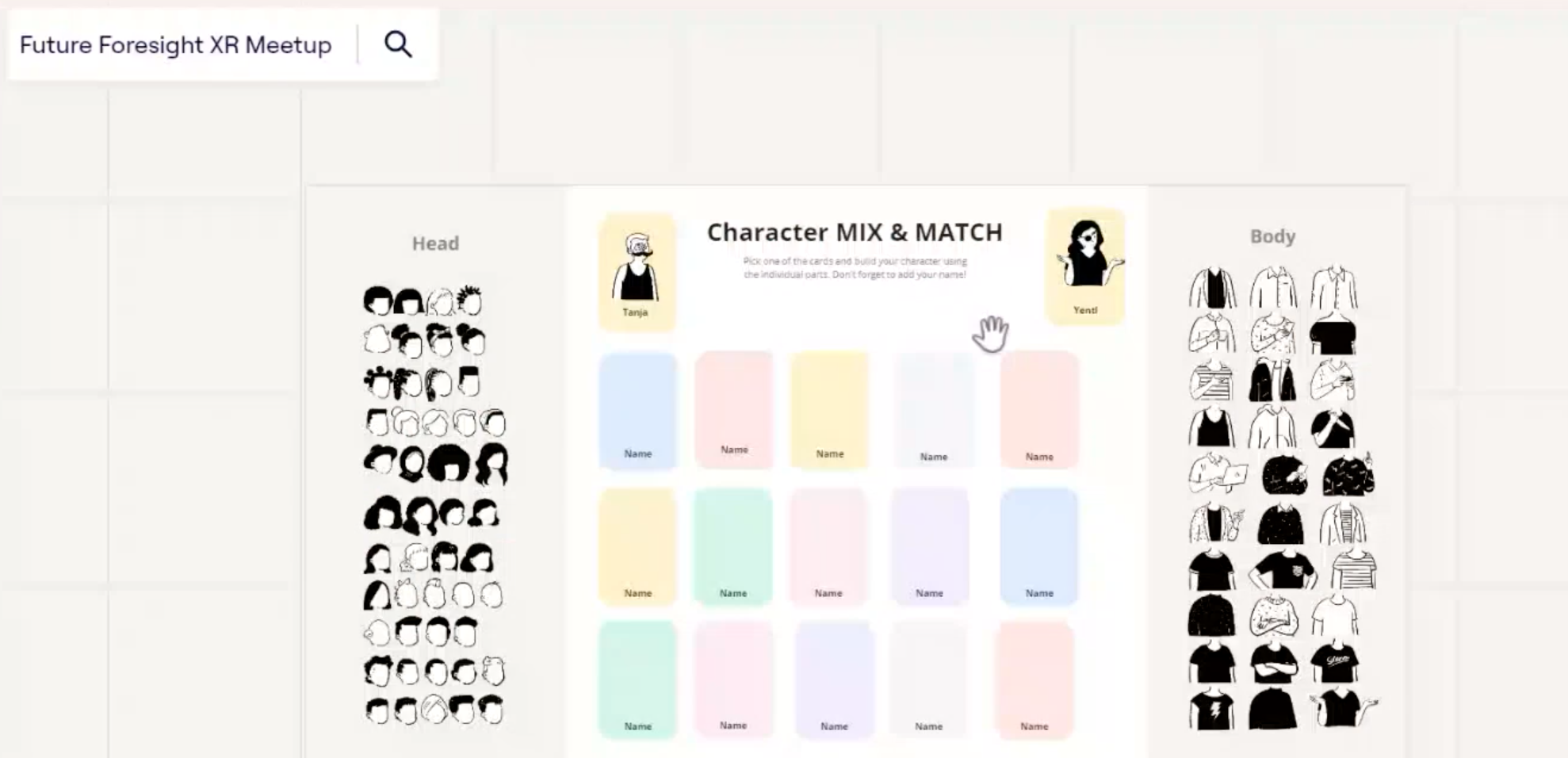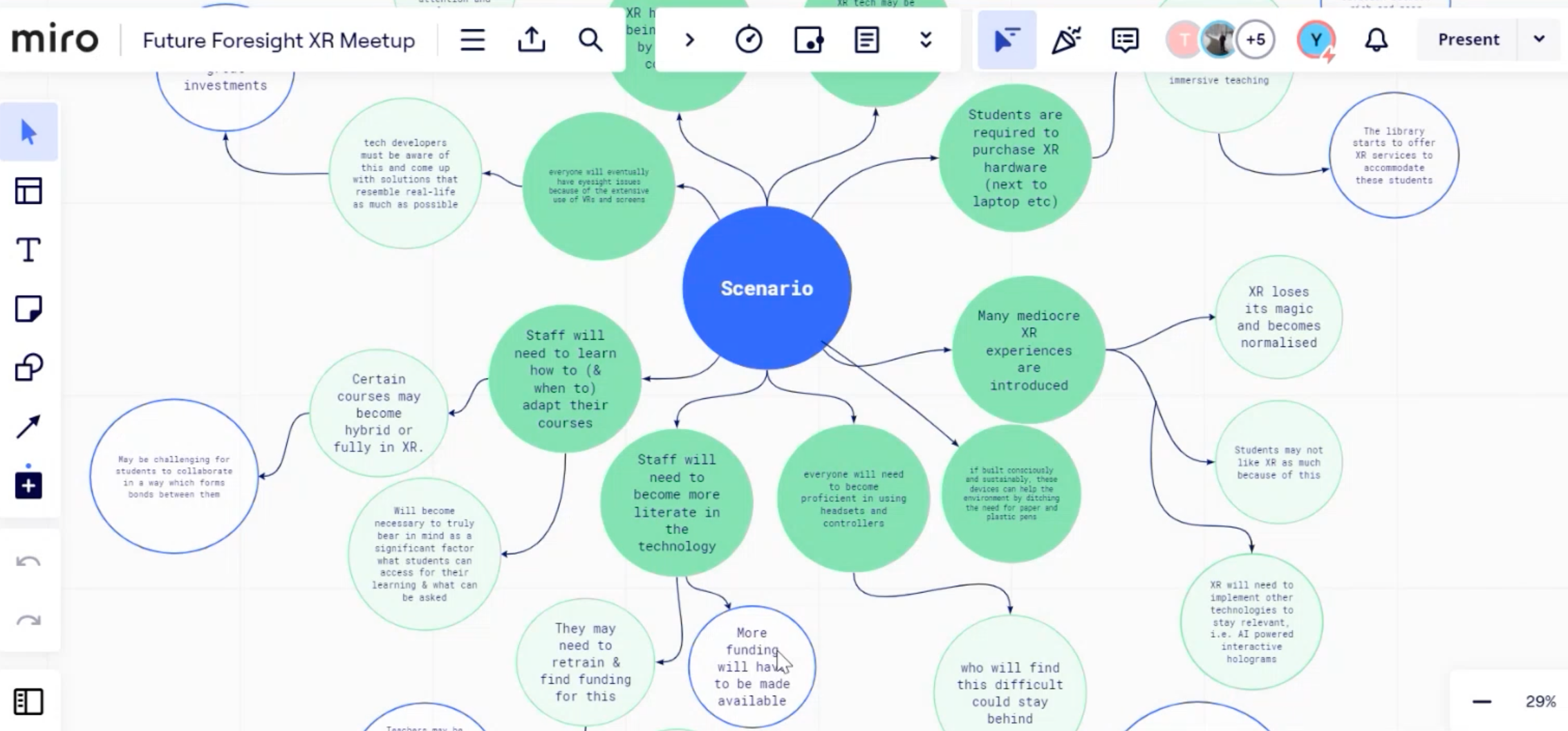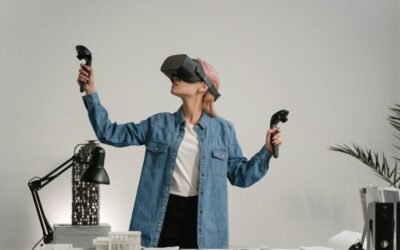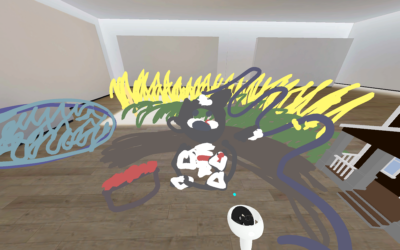On the 8th of November, the XR ERA community came together for an interactive workshop on the topic of Future Forecasting in XR. Grounded in the methodology of Future Foresight, we were challenged to contemplate a range of scenarios ranging from the commonplace to the outlandish, prompted by two key questions – ‘what if?’ and ‘what then?’
In itself, Future Foresight is “a powerful methodology which encourages a strategic, forward-thinking approach to decision making”. It enables those who contemplate though its framework to envision various versions of the future, thereby preparing them to better cope with such situations, or those similar, should they ever arise.
ABOUT THE SPEAKERS
This month, we were thrilled to be joined by two members of the Leiden Learning & Innovation Centre, Tanja de Bie and Yentl Croese. Despite their backgrounds in different disciplines, the pair are united by their passion for looking to the future and have worked practically and extensively with Future Foresight, developing both a leading workshop at the SURF Onderwijsdagen and a specially-dedicated Leiden University Honours Class.
WHERE DID FUTURE FORESIGHT COME FROM?
Although LLInC’s Future Foresight methodology remains a relatively recent development, as Tanja intriguingly hints, the same cannot be said for the concept of foresight methodologies more broadly. During the 19th century, the literary genre of SciFi grew enormously in popularity, transporting readers to time periods and far-off worlds which, at the time, were a far cry from reality. Curiously, however, the fact of this remoteness having been made tangible heralded considerable societal impact.
As the SciFi genre became more commonplace, it not only permitted people to visualise how the future might look, but also normalised this act of future contemplation for the masses. The significance of this genre within the realm of foresight methodologies extends, however, far beyond this. In addition to facilitating visualisation, SciFi has had the rather wonderful effect of enabling this envisaged future to take its place within reality. As Tanja well notes, the Holodeck of Star Trek existed well before any kind of XR and hologram technology to which it, nowadays, bears noteworthy resemblance. The same could once again be said for the almost iPad-like device, once again, within Star Trek.
Although originally dreamt up for a SciFi movie, these technologies have now become a reality. In such situations, the relevance of Future Foresight becomes apparent. If we, at the present moment, begin to contemplate technologies and scenarios which are currently far from realisation, does this increase their chances of coming into fruition? Likely so! Moreover, giving ourselves the opportunity to contemplate advances far in advance improves our chances of coping well with them, foreseeing their impact, and acting accordingly.
With this in mind, the group turned to an interactive online Miro board to put the Future Foresight methodology into use within the context of XR.
IMPACT QUADRANT
The section of the Meetup which followed took the form of an interactive, scenario-based workshop consisting of three scenario-oriented activities. The first of these was the Impact Quadrant. During this exercise we, as participants, were encouraged to suspend our disbeliefs and perceive the future scenario in question from our on unique points of view.
All participants were encouraged to create their own avatars from a range of digital clothes and hairstyles before placing themselves, as this avatar, upon an ‘impact quadrant’. Along one axis, this measured positivity and, along the other, self-perceived level of influence. Participants carried out this task in response to the prompt of how they feel concerning the future in the broadest sense.
Once all had placed avatars upon the quadrant, Tanja noted the XR ERA members’ highly unusual situation, namely that every single participant had placed themselves within the quadrant’s upper half. All were, at least to some extent, positive both in general and regarding the extent of the influence which they felt they hold over the course of events.

FOUR EMOTIONS
In this next section of the workshop, participants were asked to express their thoughts on a given scenario under the headings of four emotions: optimistic, worried, frustrated, and surprised.
The scenario presented was thus:
“In the year 2033: (1) immersive technologies form the majority of the university campus (2) students use a variety of virtual avatars to represent themselves in and outside class (3) there are debates about what avatars to allow and disallow (fantasy, gender, ethnicity etc.) (4) do you feel like you can express yourself within this environment?”
Having taken a few minutes to write their answers upon virtual post-it notes, participants took it in turn to elaborate upon their thoughts with some interesting results. Indeed, while several expressed an element of excitement regarding XR’s vastly increased rate of adoption within a university setting and the potential to better facilitate certain demographics, some also vocalised considerable concern, believing it preferable for XR technology to maintain a considerably lower profile. Comments were also made regarding the proliferation of conversations regarding self-expression in people’s choice of avatar. The consensus was a mixed one to say the least.
FUTURE WHEEL
In this final exercise, participants were presented with one last scenario:
“In the year 2033, immersive technologies form an important layer over the physical campus. What is the impact on sustainability? What is the impact on staff? How is governance arranged? What skills become more important for teachers and students? How do you stay relevant?”
The instruction was given to ask oneself what might the direct consequences of this scenario be as well as the consequences of these, and so forth. Any thoughts should then be placed on the Future Wheel as a means of visibly observing both how many consequences and ideas can stem from only one scenario and the extent to which they can, in themselves, be built upon.
Following ten minutes of thought and writing, amongst the strands of thought which came forth were the following:
- Decline in authentic relationships and, consequently, in mental health
- Issues with data storage and the pace, energy, and finance required for their resolution
- The requirement for teachers to adapt and the resulting training and resources required

CONCLUSION
To conclude our session on Future Foresight within an XR context, we were given a parting reminder of the importance of bringing your unique circumstances into play when conceptualising a vision of the future. Each individual’s insights are experience-dependant and an ability to acknowledge and learn from this during collaboration is fundamental, whether discussing with those who are like-minded or those whose viewpoints lie far from your own.
If you are keen to discover out more about Future Foresight and, in particular, how it has been utilised within the Leiden Learning & Innovation Centre and Leiden University, feel more than welcome to take a look at the dedicated Future Foresight blog series to be found on their website.




